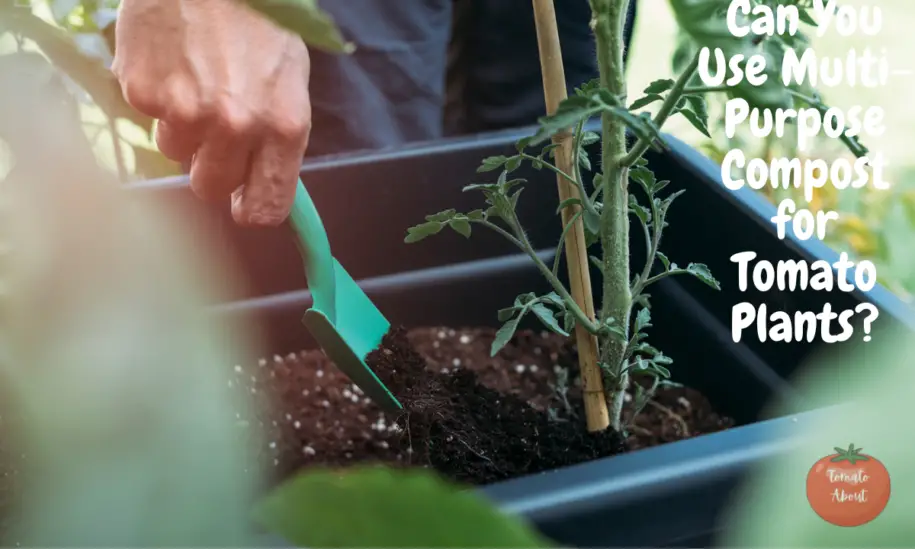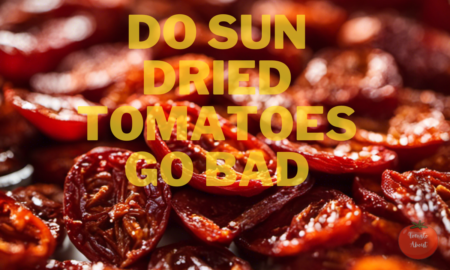As a tomato gardening enthusiast, you want to use the ideal soil and compost to grow the tastiest, most prolific tomatoes possible. With so many options out there, you may be wondering – can I just use regular multi-purpose compost for my tomato containers and raised beds?
Through extensive personal experience, I’ve found that multi-purpose compost can successfully grow healthy tomato plants with proper amendments. However, not all multi-purpose mixes are created equal, so you need to understand how to optimize them specifically for tomatoes.
In this detailed guide, I’ll cover everything you need to know about using multi-purpose compost for tomatoes, including:
- What exactly is multi-purpose compost?
- The pros and cons of using it for tomatoes
- How to amend it for the best tomato growth
- Making your own customized tomato compost
- Characteristics of ideal tomato compost
Let’s get growing!
What is Multi-Purpose Compost?
Multi-purpose compost refers to a general soilless potting mix made for container gardening, starting seeds, and growing a wide variety of flowers, vegetables, and herbs.
It’s a blend of several ingredients combined in ratios intended to provide a moderate level of nutrients and a pH appropriate for most plants.
Typical components include:
- Peat moss or coco coir – improves moisture retention
- Compost, bark, or manure – adds organic matter and fertility
- Perlite or vermiculite – enhances drainage and aeration
- Dolomitic lime – provides calcium and adjusts the pH
- Starter fertilizer – feeds plants for 4-6 weeks
Multi-purpose compost is a versatile, affordable alternative to buying specific mixes for each plant type. It’s commonly used for seed starting, transplants, and container gardening.
There are various brand names and generic options to choose from. Be sure to check the label for the ingredients and nutrient analysis before purchasing.
Can You Use Multi-Purpose Compost for Tomato Plants?
Multi-purpose compost can definitely be used to grow tomato plants, especially when gardening in containers, raised beds, and hanging baskets. Here are some of the potential benefits of using it for tomatoes:
- Excellent for starting seeds and cuttings. The loose texture provides good airflow for seeds to germinate and tender roots to establish themselves. It also supplies a suitable level of nutrients for seedlings.
- Holds moisture but allows drainage. Tomatoes need consistently moist, but not wet soil. Multi-purpose compost retains water well but also allows excess to drain away.
- Weed-free and sterile. Made from manufactured ingredients, multi-purpose compost won’t introduce weed seeds or pathogens into your tomato containers.
- Versatile. One bag can be used for tomatoes and any other vegetables or flowers you want to grow in pots or beds.
- More affordable. Multi-purpose mixes are usually cheaper than specialty tomato soils.
When NOT to Use Multi-Purpose Compost for Tomatoes
While versatile, multi-purpose compost does have some limitations for tomatoes:
- Nutrients are depleted quickly. It only contains enough nutrients to feed plants for about 4-6 weeks. Tomato plants need regular fertilizing throughout the season.
- Lower fertility. Tomatoes thrive in very fertile soil. Multi-purpose compost may not be nutrient-rich enough on its own to produce the best crop.
- Poor drainage. Some multi-purpose mixes can retain too much moisture and get waterlogged, leading to root rot. This is especially problematic for tomatoes.
- Not ideal for in-ground use. Multi-purpose compost is designed for containers. For in-ground tomato growing, soil with more loam and organic matter is better.
How to Optimize Multi-Purpose Compost for Tomatoes
When using multi-purpose potting mix for container tomatoes, incorporate the following amendments and practices:
- Add extra perlite – about 30% improves drainage and airflow
- Mix in extra compost or worm castings – 20-30% boosts nutrients and organic matter
- Test and adjust pH to 6.0-6.5 – tomatoes prefer slightly acidic soil
- Use timed-release fertilizer at planting to extend feeding
- Avoid overly moisture-retentive mixes by checking peat content on labels
- For seeds, sift out large pieces to create a fine texture for germination
- Feed with liquid fertilizer weekly during peak growth and fruiting
Follow these tips, and multi-purpose compost can grow impressive tomato plants on your deck or patio!
Making Your Own Multi-Purpose Tomato Compost
With a few key ingredients, you can easily make your own custom multi-purpose potting mix tailored for tomatoes:
Ingredients:
- 1 part sphagnum peat moss or coco coir for moisture retention
- 1 part high-quality compost, worm castings, or manure for fertility
- 1 part perlite or vermiculite to improve drainage and airflow
- 1-2 tbsp dolomitic lime per gallon of soil to add calcium and adjust the pH
Thoroughly mix together the ingredients before filling containers and raised beds. This will provide an ideal blend of moisture retention, drainage, nutrients, and pH buffering. Use this homemade compost for tomato transplants and containers. Supplement with liquid fertilizer, and tweak the recipe each season to optimize results.
Characteristics of Ideal Tomato Compost
When it comes to growing the healthiest tomatoes and maximizing fruit yield and flavor, the ideal potting mix should have:
- A loamy, soil-like texture to balance moisture, nutrients, and airflow.
- High organic matter and fertility, like compost and manure.
- Optimal pH between 6.0-6.5 to prevent issues.
- Excellent drainage and aeration to avoid diseases
- Fast drying time to reduce chances of overwatering.
Premium potting soils and homemade composts with loam, compost, fertilizers, and amendments can provide this winning tomato root environment.
Frequently Asked Questions
Q: Does multi-purpose compost provide enough nutrients for tomatoes?
A: Multi-purpose compost only contains starter nutrients to feed plants for 4-6 weeks. Tomato plants need regular fertilizer throughout the season for optimal yield and fruiting. Supplement multi-purpose mixes with timed-release fertilizer at planting and liquid feeds every 1-2 weeks.
Q: How do I adjust the pH of multi-purpose compost for tomatoes?
A: Test the pH of your multi-purpose compost first. Tomatoes prefer a slightly acidic pH between 6.0-6.5. If it’s too alkaline, mix in sphagnum peat moss to lower the pH. Adding composted pine bark or cottonseed meal will also help acidify soil.
Q: Can I use multi-purpose compost in raised garden beds for tomatoes?
A: Multi-purpose compost is designed primarily for container gardening. For raised beds, it’s better to amend native soil with compost and fertilizers. Or fill with a high-quality organic vegetable garden soil, and supplement with nutrient-rich compost.
The Bottom Line
Can you use regular multi-purpose compost when planting tomato plants? The answer is yes, with some amendments it can grow excellent tomatoes, especially in containers.
But not all multi-purpose mixes are the same. Evaluate each brand, and modify as needed by adding more aeration, drainage, nutrients, and pH buffers. With smart tweaking, affordable multi-purpose compost can become a versatile tomato planting compost customized for optimal growth, yield, and flavor!
I hope these tips help you decide if multi-purpose compost is suitable for your tomato gardening needs. Please let me know if you have any other questions!



